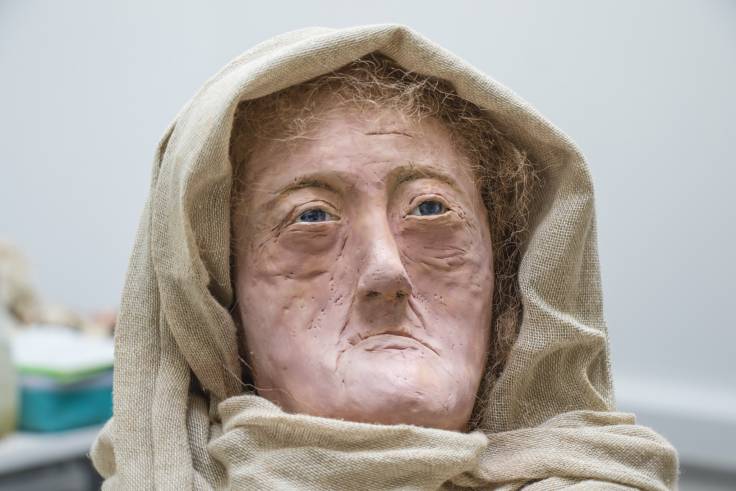YouTube Video Here: https://www.youtube.com/embed/39jpILKe64w?feature=oembed&enablejsapi=1
For years, the The University of Edinburgh’s Anatomical Museum has called her “Hilda,” and kept her skull for a very important and historical reason: She lived to the age of 60, nearly twice the average life expectancy when she died some 2,000 years ago.
That’s where Karen Fleming, a student in Forensic Art & Facial Identification at the University of Dundee, comes into the story, determined to give Hilda a face for the world to finally see after 200 years of her skull resting quietly at the museum, one of six “Druids of the Hebrides” that were gifted to the Edinburgh Phrenological Society, according to Newsweek.

Though researchers were unable to conduct carbon dating to determine exactly when Hilda died, information from an 1833 journal says she lived between 55 BC and 400 AD. Also, she was Celtic. She was from Stornoway, on the Isle of Lewis—an island to the northwest of mainland Scotland.
Fleming said the facial reconstruction project helped her learn more about Hilda and women of her time:
“Hilda was a fascinating character to recreate. It’s clear from the skull she was toothless before she died, which isn’t too surprising considering the diet of folk back then but it was impressive how long she lived. A female’s life expectancy at this time was roughly 31 years but it is now thought that living longer during the Iron Age is indicative of a privileged background…I think she looks like many older women I’ve met in my life and I’m proud of that.”

From Wax to “Life:
Fleming explained to the BBC that she constructed Hilda’s face from wax, beginning with the facial muscles and then slowly built up the skin until a face began to appear:
“There’s measurement taken for the skull and the ears and if they have teeth you can measure for the lips.”
And the artist also sheepishly admitted that Hilda almost melted in the heatwave that baked much of Europe this summer:
“It’s funny to say it now but I had to keep parts of Hilda, like her wax modeled ears, in the fridge for most of the summer. As a mature student who commutes from Edinburgh, I often had to keep her cool in the car, strapped up in the passenger seat. I’m sure that’s a sight passers-by won’t forget seeing.”

Who were the Druids?
While we now know what Hilda looked like, we don’t know a lot about the Druids, according to Ronald Hutton, professor of history at Bristol University, who notes that the word “druid” means a person who practices religion or magic:
“The problem is knowing what the word actually means in practice. Because there are a lot of Celtic languages spoken by a lot of Celtic people from the Iron Age, it can mean all sorts of things from somebody who’s a blacksmith who dabbles in magic on the side.”
Hutton added that there were indeed female druids, though what that meant varied from person to person:
“In Celtic-speaking societies you can have druids with everything from really important decisive figures in society to somebody sitting in a tavern reading palms, they’re both druids.”
No matter what exactly constitutes a druid, at least Hilda finally has a face after waiting two centuries for one.
For what we do know about the druids, watch this video
Featured Image Via University of Dundee



